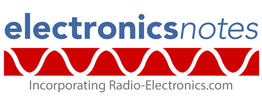Home » Component data » Voltage regulator data » this page
78L10 10V Linear Voltage Regulator Data
Key data for the 78L10 voltage regulator including key electrical parameters, current, voltage, pinout, package type and many other key datasheet details.
The 78Lxx series of linear voltage regulators have been available for many years. Even many years down the line, they are still very useful and they are manufactured by a variety of companies and they are still current.
The regulators are fixed voltage regulators for which there is a good range of standard values, and it is possible to adjust them is absolutely necessary although they have been designed to operate at their specified voltage.
The 78xx series voltage regulators are available with a variety of power levels. These regulators are the low power or L range which are suitable for providing small current outputs up to 100mA. Larger versions are available should they be required.
Key details and performance parameters for the 78L10 voltage regulator.
| 78L10 voltage regulator datasheet parameters & data |
|
|---|---|
| Parameters | Details |
| Brief description | Low power 10V 3 terminal regulator |
| Package type | TO92, SOT89, 8 pin SOIC |
| Output voltage | 10V typ (9.2 min, 10.8 max) |
| Output current | 100mA max |
| Input voltage (V>) | 12.5 - 23V |
| Input voltage regulation | 230mV max for 12.5 - 23V input change |
| Output voltage regulation | 80mV typ, 60mV max for 1 mA to 100mA load current |
| TJ °C | 125 |
| PTOT mW | |
| Drop-out voltage (V) | 1.7 |
Outlines & Pinout:
Explanation of transistor parameters
| Parameter | Explanation |
|---|---|
| Output voltage | This is the key parameter for a fixed voltage regulator. Normally for fixed voltage regulators, values for the typical as well as minimum and maximum output voltages will be give. For variable regulators the limits of operation are given. |
| Output current | This is the maximum current which can be provided in mA or A. Sometimes there may also be a minimum current for the specified operation. |
| Input voltage regulation | This is the regulation performance for a given input voltage range. |
| Parameter | Explanation |
|---|---|
| Output voltage regulation | This is the output voltage regulation for a specified change in load current |
| TJ | Maximum junction temperature. |
| PTOT Max | Maximum device dissipation normally in free air at 25°C unless other conditions indicated. |
| Drop out voltage | This is the minimum voltage across the device, i.e. input to output, that will provide regulation. Below this value the regulator will not provide regulation. |
These are the main voltage regulator parameters that have been included in our list. There are others, but these help quantify the main elements of the performance of the regulator, but are normally deemed to be less important.
Please note, that the data given is the best estimate we can give within a tabulated summary of this nature. Parameters also vary between manufacturers. Electronics Notes cannot accept any responsibility for errors, inaccuracies, etc, although we do endevaour to ensure the data is as accurate as possible.
Notes and supplementary information
The 78L10 is one of the less standard values, although more common than the 78L08 for example. As a result it is less widely available when compared to the more popular voltages of 5 and 12 volts.
That said it is still available from some manufacturers and distributors, although there may sometimes be a few more issues obtaining it, although it is still a current device with many manufacturers.
• Availability & sources
The 78L10 is available from a number of stockists and electronic component distributors many of which are given in the table below.
78L10 Component Distributor, Stock and Pricing
• Circuit details
The 78L10 is a very easy voltage regulator integrated circuit to use. However there are a few small details that need to be addressed whenusing them.
The basic circuit is seen below.

The main point to note is that capacitors are required on the input and the output. Typically a 0.33µF capacitor is required on the input and 0.1µF is needed ont he output.
These are minimum values and larger ones may provide improved performance.
 Written by Ian Poole .
Written by Ian Poole .
Experienced electronics engineer and author.
Return to Component Data menu . . .



